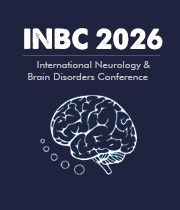Title : A case of infantile GM1 gangliosidosis with recurrent infections and neurodegeneration
Abstract:
GM1 gangliosidosis is a rare lysosomal storage disorder inherited in an autosomal recessive pattern. It is caused by a deficiency of the enzyme beta-galactosidase, encoded by a gene on chromosome 3. The resulting enzymatic defect leads to pathological accumulation of GM1 gangliosides within lysosomes, predominantly affecting neural and visceral tissues. The infantile form is the most severe and typically manifests within the first six months of life, characterized by progressive neurodegeneration, hepatosplenomegaly, coarse facial features, hypotonia, and developmental regression.
We present a case of a 10-month-old male child who was developmentally normal until 8 months of age, after which he began to exhibit progressive loss of milestones across all domains. Ten days prior to presentation, he developed high-grade intermittent fever, followed by respiratory symptoms including cough, rhinorrhea, and noisy breathing. Subsequently, the child displayed altered sensorium and focal seizures, characterized by sudden jerky movements involving all four limbs without facial involvement or postictal confusion.
Birth history revealed delayed cry and prior respiratory distress at two months requiring hospitalization. Antenatal history was significant for three first-trimester abortions and oligohydramnios in the current pregnancy. Developmentally, the child had partial neck holding and roll-over milestones but failed to achieve crawling or unsupported sitting. Regression began at 8 months.
On examination, the child exhibited hypotonia, frog-leg posture, coarse facial features, extensive Mongolian spots, hepatosplenomegaly, and facial dysmorphism. Neurologically, the child had reduced tone and power in all limbs, with exaggerated deep tendon reflexes and bilateral extensor plantar responses. EEG showed generalized delta-theta slowing suggestive of diffuse cortical dysfunction. Fundoscopic evaluation revealed bilateral cherry-red spots, a classic finding in GM1 gangliosidosis.
This case highlights the diagnostic challenges and clinical spectrum of infantile GM1 gangliosidosis, emphasizing the importance of early recognition in infants presenting with neuroregression, seizures, and systemic involvement. Timely diagnosis is essential for genetic counseling and supportive management, as the condition remains progressive and currently has no definitive cure.




